The most difficult issue with some alignments is knowing what you are getting into before you start or your shop even quotes the job. For almost two years, Hunter Engineering has been sponsoring BRAKE & FRONT END’s Suspension & Alignment Specs where Editor Andrew Markel examines a common vehicle platform to figure out what are the service issues and how to make the adjustments.
Below are some of the top tips from the articles that can help you know what you are getting into even before the vehicle is pulled into the bay. If you are a service writer, these tips can help you sell more up front, so you do not have to make repeated phone calls to the customer for additional approvals.
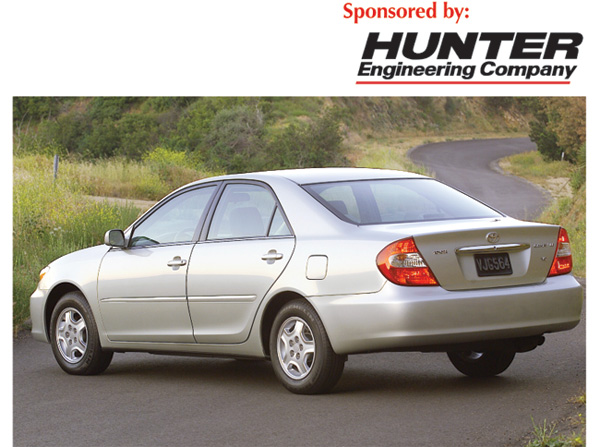
2002-2006 Toyota Camry
July 2010, page 22
Replacement control arms are readily available for this vehicle do not hesitate selling them. Pay attention to the included angle or SAI. This diagnostic angle can help you determine if the control arm or knuckle has been damaged. The only significant TSBs listed for suspension system concerns noise coming from the upper strut mounts in the front and rear on 2002-2006 models.
2005-2010 Chevy Cobalt & Pontiac G5
July 2011, page 28
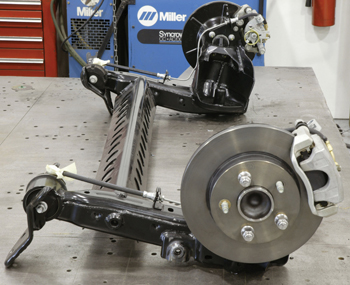 The rear suspension angles can be adjusted with the installation of a shim that is placed between the rear hub and axle mounting plate. A shim should be able to change toe or camber 1 to 1.5 degrees. It has been reported that on some rear disc brake vehicles, the introduction of a shim may cause the caliper to bind or the rotor to strike the caliper bracket.
The rear suspension angles can be adjusted with the installation of a shim that is placed between the rear hub and axle mounting plate. A shim should be able to change toe or camber 1 to 1.5 degrees. It has been reported that on some rear disc brake vehicles, the introduction of a shim may cause the caliper to bind or the rotor to strike the caliper bracket.
1999-2005 Hyundai Sonata
March 2011, page 18
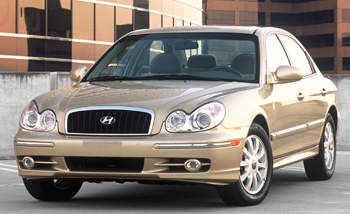 One of the most common failures on the Sonata are the rear springs. Make sure to check for cracked or broken coils at the top or bottom of the spring. If a rear spring is broken or weak, it can cause increased negative camber and the toe to be out of specification.
One of the most common failures on the Sonata are the rear springs. Make sure to check for cracked or broken coils at the top or bottom of the spring. If a rear spring is broken or weak, it can cause increased negative camber and the toe to be out of specification.
2005-2010 Ford Mustang
February 2011, page 14
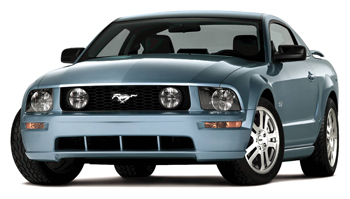 The front lower control arms also use a “Hydro” or hydraulic rubber bushing in the rear mount. Also, bushings in the front control arms can change the camber and caster by ± 1.0º or more if they are worn. Visually inspect the bushing looking for any cracks or separation of the rubber from the shaft and shells.
The front lower control arms also use a “Hydro” or hydraulic rubber bushing in the rear mount. Also, bushings in the front control arms can change the camber and caster by ± 1.0º or more if they are worn. Visually inspect the bushing looking for any cracks or separation of the rubber from the shaft and shells.
2001-2009 Toyota Prius
April 2011, page 16
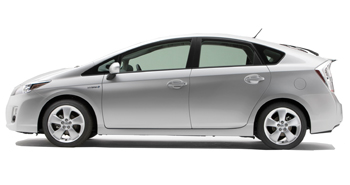 Most Prii came with HID headlights. This system has an sensor with an arm connected to the rear axle that determines the angle of the headlights so that other drivers are not blinded. The linkage can become damaged due to road debris. Also, make sure the ride height is inspected.
Most Prii came with HID headlights. This system has an sensor with an arm connected to the rear axle that determines the angle of the headlights so that other drivers are not blinded. The linkage can become damaged due to road debris. Also, make sure the ride height is inspected.
2005-2011 Chevrolet Equinox
May 2011, page 20
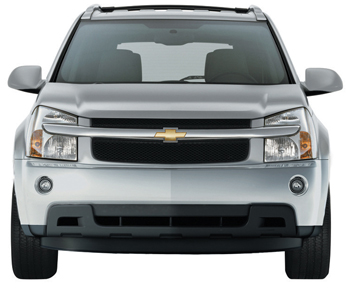 The rear cams can have significant “cross talk,” so always recheck both camber and toe angles after any adjustment of either cam.
The rear cams can have significant “cross talk,” so always recheck both camber and toe angles after any adjustment of either cam.
2007-2011 GM Lambda Full-Sized SUVs
December 2010, page 20
The lower ball joints and tie-rods require final tightening with a torque angle gauge. On the lower ball joints, tighten the mounting nut to 30 ft/lbs plus 120 degrees. It is almost impossible to get a socket and torque angle gauge over the nut and stud, but it can be done with a combination wrench and Allen wrench. Just remember, 120 degrees equals approximately two wrench flats. For tie-rod studs, tighten the nut to 22 ft/lbs and 120 degrees.
2006-2010 Chevrolet Impala
May 2010, page 18
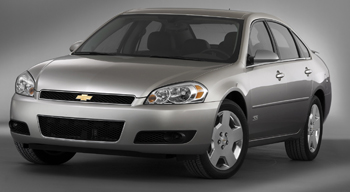 Adjusting the camber requires some extra work. GM did not elongate the lower bolt holes that attach the strut to the knuckle on some vehicles or build adjustability into the upper strut mount. The 2010 documentation shows movement without requiring slotting.
Adjusting the camber requires some extra work. GM did not elongate the lower bolt holes that attach the strut to the knuckle on some vehicles or build adjustability into the upper strut mount. The 2010 documentation shows movement without requiring slotting.
Before performing the alignment, inspect any vehicle to find out if the alignment angles are adjustable or require extra parts, special procedures or kits. 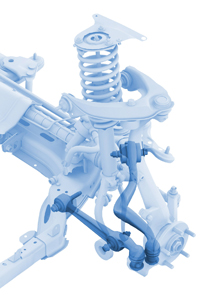
2006-2010 Ford Fusion
February 2010, page 10
Be aware, to adjust the camber or caster in the front requires replacement of the upper ball joint with an aftermarket adjustable unit. Also, the caster can be adjusted with new upper “plus or minus” control arms from Ford.
2007-2010 Dodge Caliber
March 2010, page 20
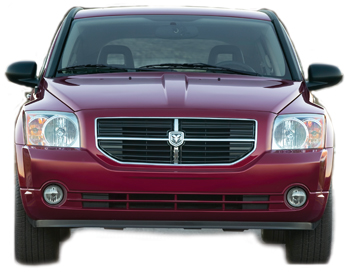 Caster and camber are not adjustable angles with conventional methods. Chrysler recommends shifting the cradle to adjust the camber and caster. Camber is adjustable with a lower bolt kit for the strut. The kit will only give ±1º of camber. Aftermarket camber adjustment bolts are also available from various manufacturers.
Caster and camber are not adjustable angles with conventional methods. Chrysler recommends shifting the cradle to adjust the camber and caster. Camber is adjustable with a lower bolt kit for the strut. The kit will only give ±1º of camber. Aftermarket camber adjustment bolts are also available from various manufacturers.
2002-2010 Jeep Liberty
September 2010, page 22
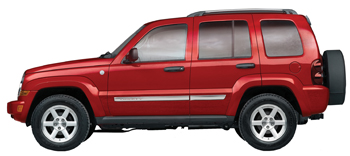 On 2008-2010 KK models, the front knuckles are aluminum and the ball joints and tie-rod ends need to be torqued and turned an additional 90 degrees. The upper ball joint and tie-rod have a torque spec of 30 ft/lbs. Lower ball joints have a torque spec of 40 ft/lbs. Failure to follow the proper torque procedure will result in damage to the knuckle.
On 2008-2010 KK models, the front knuckles are aluminum and the ball joints and tie-rod ends need to be torqued and turned an additional 90 degrees. The upper ball joint and tie-rod have a torque spec of 30 ft/lbs. Lower ball joints have a torque spec of 40 ft/lbs. Failure to follow the proper torque procedure will result in damage to the knuckle.
2003-2007 Cadillac CTS
January 2010, page 16
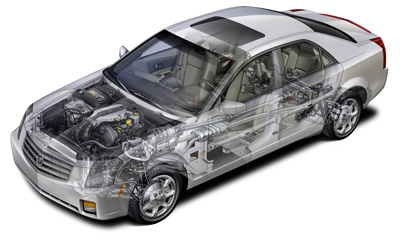 The CTS for years 2003-2007 came with two suspension packages – standard and sport. The packages have two different alignment specifications. The RPO codes for these packages can be found on the underside of the spare tire cover. Or, you can check the tire inflation sticker on the driver’s side door pillar for the original tire size. The standard or base model came with 16-inch tires; this is designated as RPO package FE1. But, 17-inch wheels were optional on some 2006-2007 FE1- equipped CTS models. These wheels were dealer installed options.
The CTS for years 2003-2007 came with two suspension packages – standard and sport. The packages have two different alignment specifications. The RPO codes for these packages can be found on the underside of the spare tire cover. Or, you can check the tire inflation sticker on the driver’s side door pillar for the original tire size. The standard or base model came with 16-inch tires; this is designated as RPO package FE1. But, 17-inch wheels were optional on some 2006-2007 FE1- equipped CTS models. These wheels were dealer installed options.
1997-2004 Chevrolet Corvette August 2010, page 20
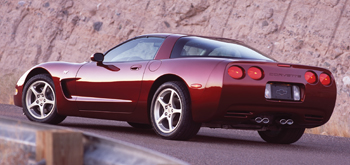 Driving the C5 Corvette onto a drive-on lift that is not set up to handle low-slung cars can be difficult. This is one car that may make you realize the limitations of your lift; take your time.
Driving the C5 Corvette onto a drive-on lift that is not set up to handle low-slung cars can be difficult. This is one car that may make you realize the limitations of your lift; take your time.
The biggest problem in aligning a C5 Corvette is the owner in some cases. I hate to stereotype Corvette owners, but some the owners are suckers for some of the worse “bolt-on” modifications and advice ever created. But, they are also some of the best informed and enthusiastic customers in the world. Ask them what they have put on the vehicle and what their expectations are from any alignment. n













